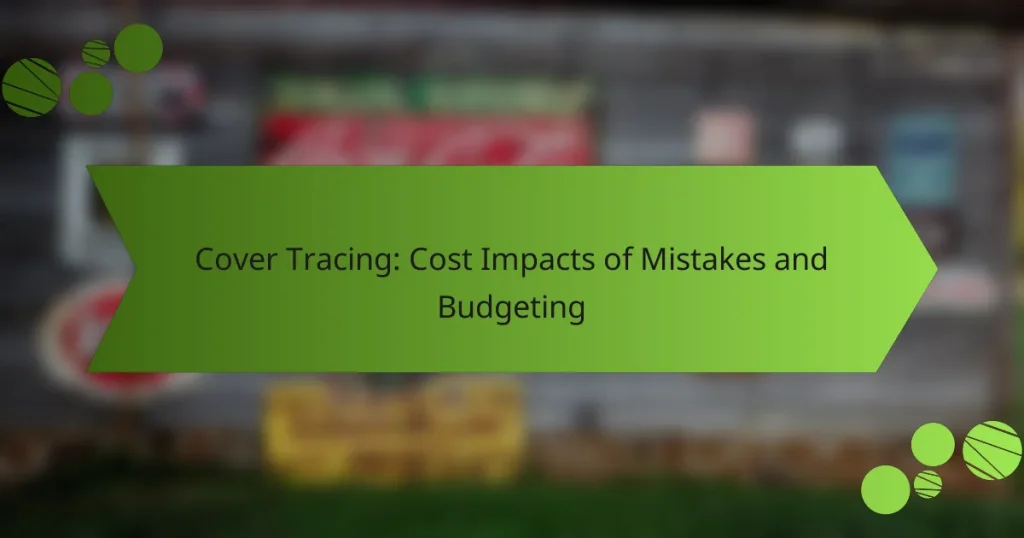Cover tracing mistakes can lead to substantial project cost increases due to material waste, labor overruns, and delays. Recognizing these financial impacts is vital for effective budgeting and project management. By implementing strategic budgeting practices and preparing for potential issues, organizations can mitigate risks and enhance overall project efficiency.

How do mistakes in cover tracing impact costs?
Mistakes in cover tracing can significantly increase overall project costs by leading to material waste, labor cost overruns, and delays. Understanding these impacts is crucial for effective budgeting and project management.
Increased material waste
Errors in cover tracing often result in the need for additional materials, as incorrect measurements can lead to cutting excess or unusable pieces. This waste not only inflates material costs but can also complicate inventory management.
For example, if a project requires 100 square meters of material but miscalculations lead to ordering 120 square meters, the extra 20% represents a direct financial loss. Budgeting for potential waste can mitigate these costs, but it’s essential to keep waste to a minimum.
Labor cost overruns
Labor costs can escalate when mistakes in cover tracing necessitate rework or additional hours to correct errors. Skilled labor is typically billed at higher rates, so the financial impact can be substantial.
For instance, if a team initially estimates 40 hours for a task but ends up spending 60 hours due to tracing errors, the additional 20 hours can significantly affect the project’s bottom line. Implementing thorough checks and balances during the tracing process can help prevent these overruns.
Delays in project timelines
Delays caused by mistakes in cover tracing can lead to cascading effects on project timelines, impacting not only labor costs but also client satisfaction and potential penalties for late delivery. Each delay can push back subsequent tasks, creating a domino effect.
For example, if a project is delayed by a week due to tracing errors, it may result in additional costs for equipment rental or labor that was scheduled for later phases. Establishing a realistic timeline with built-in buffers for potential errors can help manage these risks effectively.
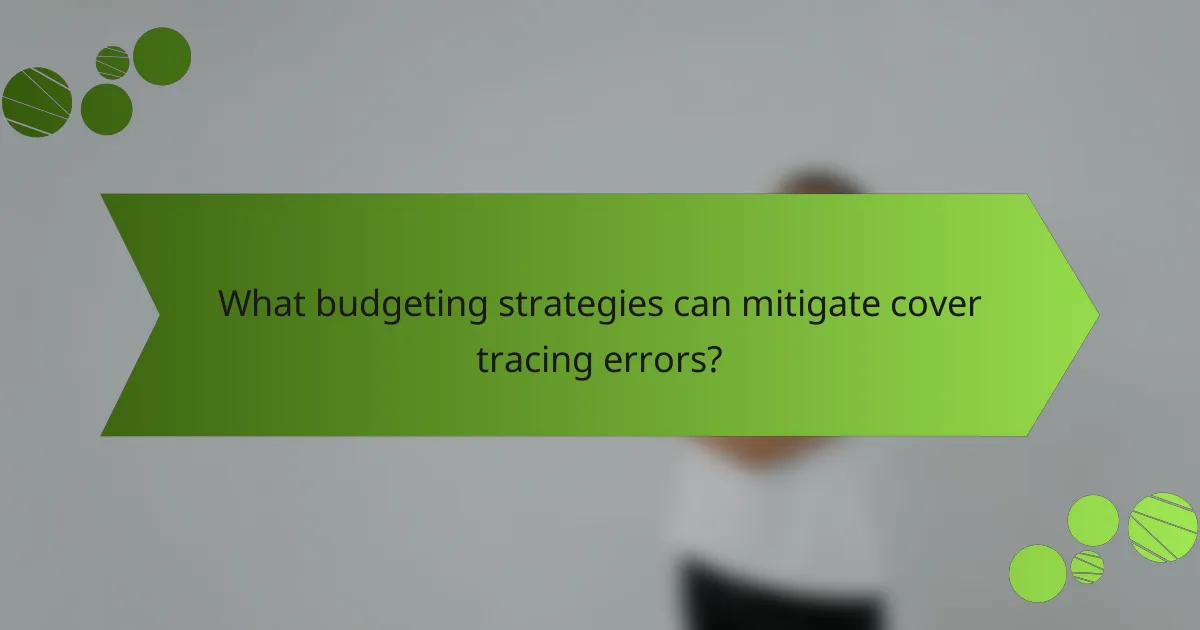
What budgeting strategies can mitigate cover tracing errors?
Effective budgeting strategies can significantly reduce the risk of cover tracing errors by allocating resources wisely and preparing for unexpected costs. By anticipating potential issues and investing in preventive measures, organizations can minimize financial impacts and enhance project efficiency.
Implementing a contingency budget
A contingency budget is a reserve of funds set aside to address unforeseen expenses that may arise during a project. Allocating around 10-15% of the total project budget for contingencies can provide a safety net against cover tracing mistakes. This approach allows teams to address errors without derailing the entire budget.
When creating a contingency budget, it’s essential to assess the project’s complexity and potential risks. Regularly reviewing and adjusting this budget throughout the project can help ensure that funds are available when needed, preventing delays and additional costs.
Investing in training for staff
Investing in staff training is crucial for minimizing cover tracing errors. Providing ongoing education about best practices, industry standards, and the latest technologies can enhance team competency and awareness. This investment can lead to fewer mistakes and improved project outcomes.
Consider implementing regular workshops or online courses that focus on cover tracing techniques and error prevention strategies. A well-trained team is more likely to recognize potential issues early, which can save both time and money in the long run.
Utilizing project management software
Project management software can streamline processes and reduce the likelihood of cover tracing errors. These tools often include features for tracking progress, managing budgets, and facilitating communication among team members. By centralizing information, teams can make informed decisions quickly and efficiently.
When selecting project management software, look for options that offer real-time updates and collaborative features. This can help ensure that everyone is on the same page, reducing the risk of miscommunication and errors that could impact the budget.

What are the common mistakes in cover tracing?
Common mistakes in cover tracing can lead to significant cost overruns and project delays. Understanding these pitfalls is essential for effective budgeting and successful project execution.
Incorrect measurements
Incorrect measurements are a frequent issue in cover tracing that can result in costly errors. For instance, miscalculating dimensions can lead to materials being cut incorrectly, necessitating rework and additional expenses.
To avoid this mistake, always double-check measurements before finalizing any plans. Using digital tools or templates can help ensure accuracy, reducing the likelihood of costly adjustments later on.
Poor communication with contractors
Poor communication with contractors can create misunderstandings that affect the quality and efficiency of cover tracing. When expectations are not clearly conveyed, it can lead to mistakes that require expensive fixes.
Establishing clear lines of communication and regular check-ins can mitigate these issues. Utilize project management tools to keep all parties informed and aligned on project goals and updates.
Neglecting to review plans
Neglecting to review plans before execution is a critical oversight that can have significant repercussions. Failing to catch errors or omissions in the plans can lead to wasted resources and time.
Implement a systematic review process that includes multiple stakeholders to ensure all aspects of the plans are vetted. This practice can help identify potential issues early, saving both time and money in the long run.
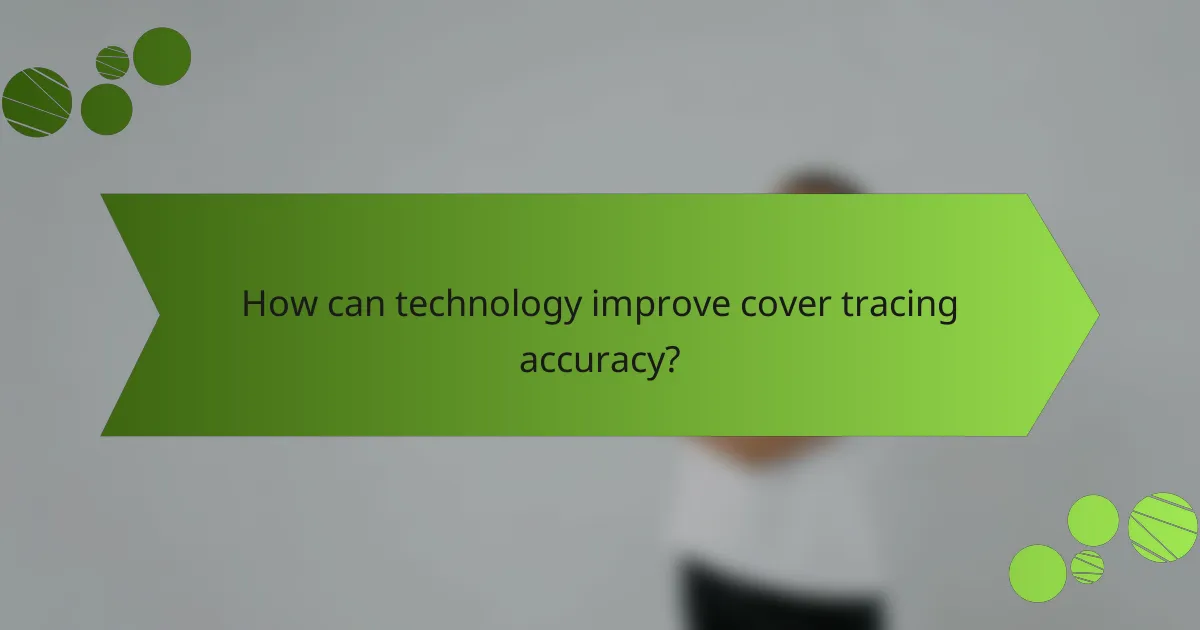
How can technology improve cover tracing accuracy?
Technology enhances cover tracing accuracy by providing precise data collection and analysis tools. Utilizing advanced software and hardware solutions minimizes human error and improves the reliability of tracing outcomes.
Using CAD software
Computer-Aided Design (CAD) software allows for detailed and accurate mapping of cover areas. It enables users to create precise layouts and visualize spatial relationships, which is crucial for effective cover tracing.
When selecting CAD software, consider features like 3D modeling, compatibility with existing systems, and ease of use. Popular options include AutoCAD and SketchUp, which can significantly streamline the design process.
Integrating GPS technology
GPS technology enhances cover tracing by providing real-time location data, which is essential for accurate mapping. By integrating GPS, users can track movements and ensure that cover areas are correctly identified and documented.
For effective use, ensure that GPS devices are calibrated and that users are trained to interpret the data accurately. This technology is particularly beneficial in large or complex sites where manual tracking may lead to errors.
Employing drones for site surveys
Drones offer a unique advantage in cover tracing by capturing aerial imagery and data from hard-to-reach areas. They can quickly survey large sites, providing high-resolution images that improve the accuracy of cover assessments.
When using drones, ensure compliance with local regulations regarding airspace and privacy. Additionally, consider investing in software that can analyze drone data effectively, enhancing the overall efficiency of the cover tracing process.
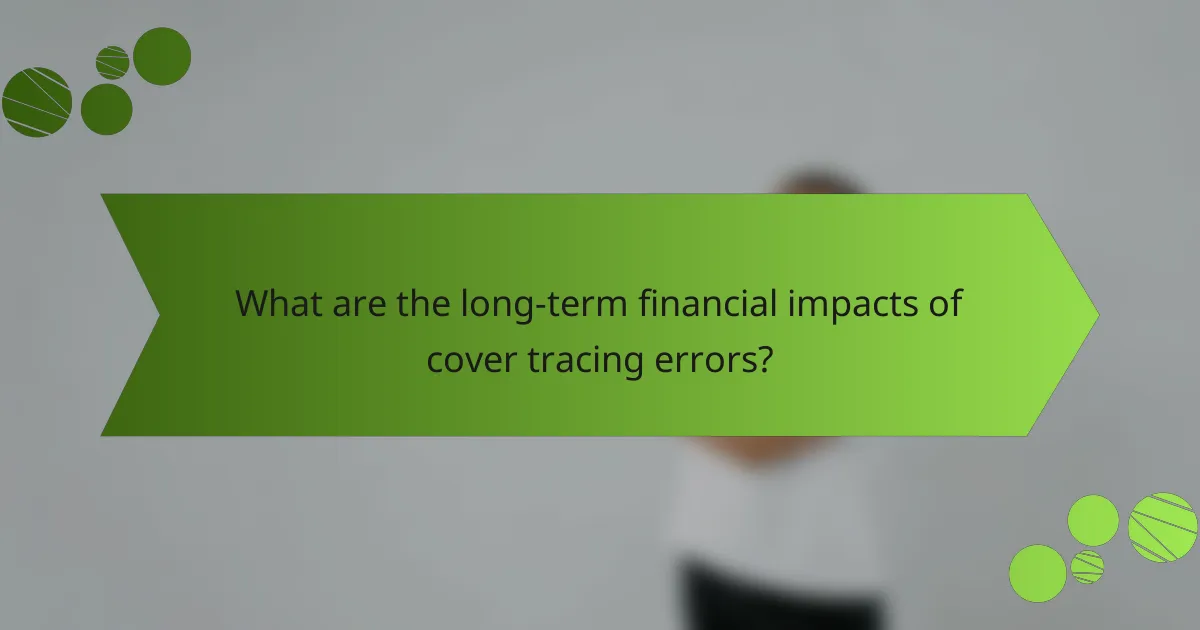
What are the long-term financial impacts of cover tracing errors?
Cover tracing errors can lead to significant long-term financial impacts, affecting project budgets and overall profitability. These mistakes can result in increased costs, potential legal issues, and damage to a company’s reputation, all of which can have lasting effects on financial stability.
Increased project costs
Errors in cover tracing often lead to increased project costs due to the need for rework, additional materials, and extended timelines. For instance, if a cover tracing mistake requires a project to be redone, costs can escalate by tens of percent, depending on the scope of the error.
To mitigate these costs, it is crucial to implement thorough checks and balances during the tracing process. Regular audits and quality control measures can help catch errors early, preventing costly rework later on.
Potential legal liabilities
Cover tracing errors can expose companies to potential legal liabilities, especially if they result in non-compliance with industry regulations or contractual obligations. Legal disputes can arise from claims of negligence or breach of contract, leading to significant legal fees and settlements.
To reduce the risk of legal issues, companies should ensure that all cover tracing practices adhere to relevant standards and regulations. Consulting with legal experts during project planning can also help identify potential liabilities before they become problematic.
Damage to reputation
Repeated cover tracing errors can damage a company’s reputation, leading to loss of client trust and future business opportunities. A tarnished reputation can take years to rebuild, affecting not only current projects but also long-term profitability.
To protect a company’s reputation, it is essential to prioritize accuracy in cover tracing. Investing in training for staff and utilizing advanced tracing technologies can enhance precision and reduce the likelihood of errors, ultimately safeguarding the company’s standing in the industry.
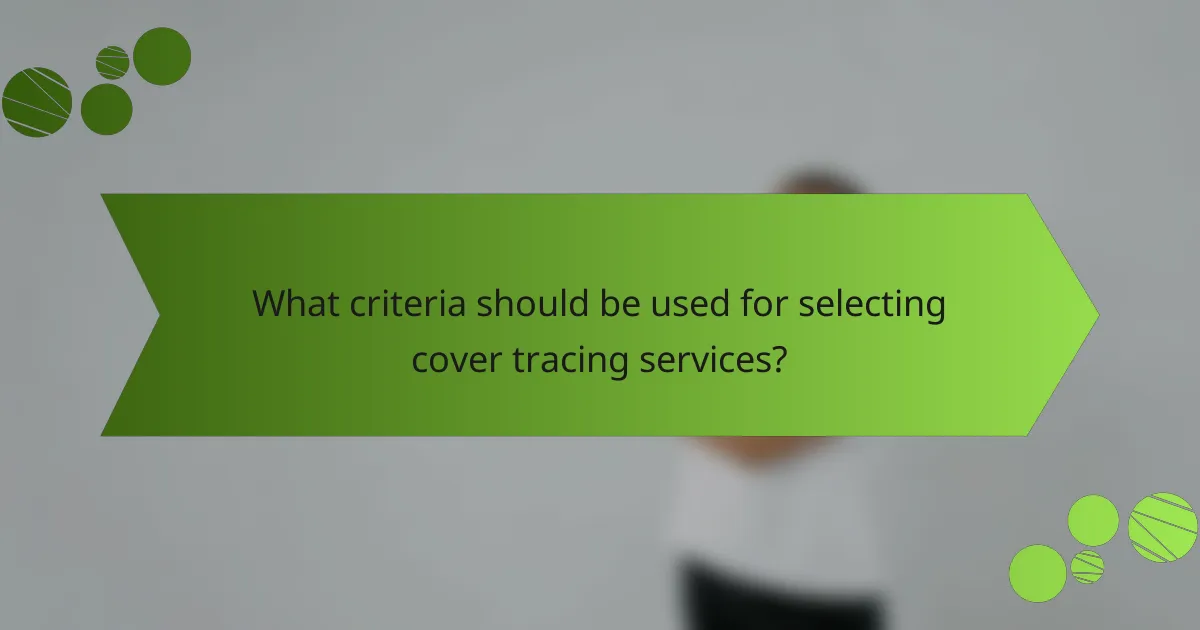
What criteria should be used for selecting cover tracing services?
When selecting cover tracing services, prioritize factors such as reliability, cost-effectiveness, and the provider’s experience in the industry. Assessing these criteria ensures that you choose a service that meets your specific needs while minimizing potential errors.
Experience and Expertise
Experience in cover tracing is crucial as it directly impacts the quality of service. Look for providers with a proven track record in handling similar projects, as they are more likely to understand the nuances and challenges involved. A company with several years in the field will have developed efficient processes and solutions.
Cost and Budget Considerations
Cost is a significant factor when selecting cover tracing services. Prices can vary widely based on the complexity of the tracing required and the provider’s reputation. It’s advisable to obtain multiple quotes and compare them, ensuring you understand what is included in the price to avoid hidden fees.
Technology and Tools Used
The technology and tools employed by a cover tracing service can greatly influence the accuracy and speed of the tracing process. Providers utilizing advanced software and methodologies are likely to deliver more reliable results. Inquire about the specific tools they use and how these contribute to their service quality.
Customer Support and Communication
Effective communication and customer support are essential when working with cover tracing services. Ensure the provider offers accessible support channels and is responsive to inquiries. Good communication can help address issues promptly and enhance the overall experience.
